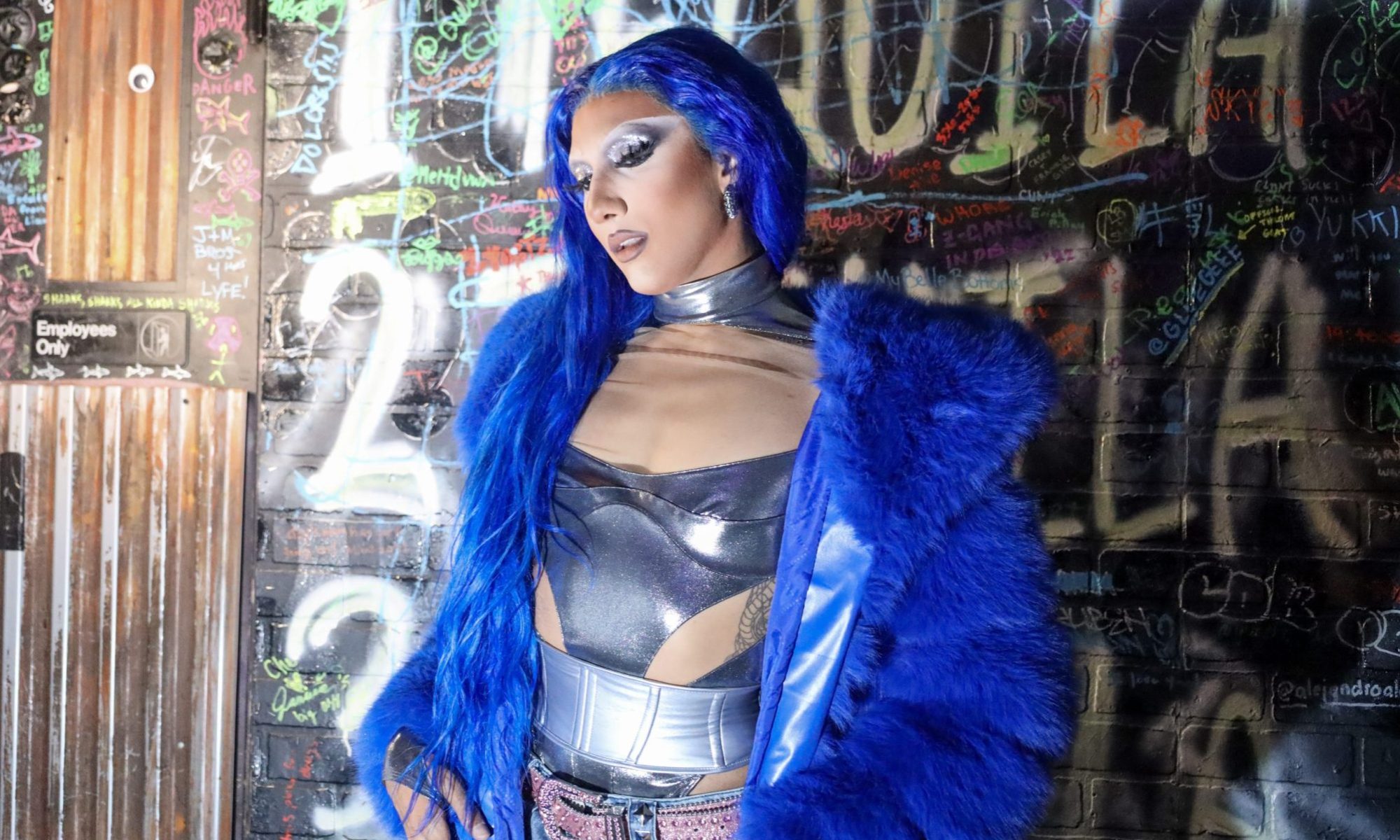Flipping her waist-length blue hair, revealing her intense cat eye to the audience, the clacking of Rae Oblivion’s knee-high stiletto boots could be heard from the back of the Bovard Auditorium at USC. With flashes of blue strobe lights, Kim Petras’s “Claws,” sounded, immediately inciting “woos” and “slays” from the crowd.
Drag queen and director/performer in USC’s Queer and Ally Student Assembly’s (QuASA) 14th annual drag show in February, Saneel Sharma, known by her stage name of Rae Oblivion, continues to explore her queer identity within the artistry. Performing in West Hollywood or downtown events almost every week, she prides herself on her alternative, glam-pop drag image and mentorship skills.
Inspired in her early teens by drag posters on her high school art teacher’s wall, her teacher provided her with makeup and a safe space to begin exploring the artistry. Here, alongside paintbrushes and pottery wheels, her love for image creation and makeup began.
Despite her current activeness in the community, navigating her queerness early on was confusing, according to Oblivion, as she grew up in a conservative city in northern California with reluctant parents.
“Queerness is that one thing that drew the line that they [her parents] weren’t accepting of,” said Oblivion. “That made me feel like I needed to protect myself at all costs and sort of put myself in a little box just to survive.”
Often feeling “sheltered” and “like an outlier,” Oblivion found her community online. Scouring for drag information in Reddit forums and watching hours of YouTube makeup tutorials, she found people like her for the first time. The ability to express herself freely and unrequitedly online became her escape, as she described it, from mocking and bullying at school.
73% of LGBTQ+ youth between the ages of 13 to 24 across the United States reported experiencing discrimination based on their sexual orientation or gender, according to a 2022 survey by The Trevor Project. For many people, finding community is extremely important to achieve a sense of belonging and is one of the leading suicide prevention tactics among the group’s youth. For Oblivion, this community was drag.
Dr. John Blosnich, an expert on sexual orientation/gender identity and a USC assistant professor, says a sense of connectedness is a necessity among the group, especially youth, to avoid feelings of isolation when many young people don’t have the vocabulary to express their queerness yet.
“Increasing the opportunities for people to find kindred spirits, to find ways to discuss with other individuals who have gone through or going through similar kinds of experiences, is absolutely fundamental to something very simple, which is not feeling like you’re the only person, not feeling alone, not feeling like an outcast,” said Dr. Blosnich.

Leave a Reply